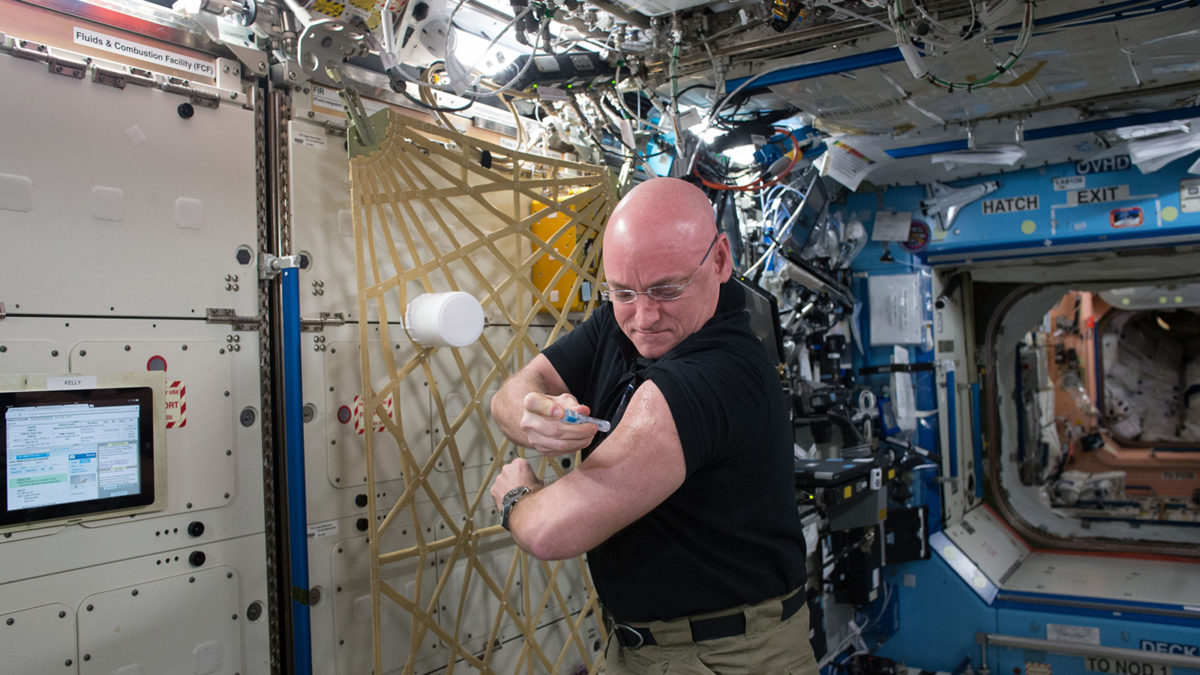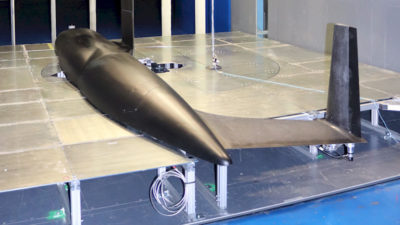Kelly twins’ year-in-space study yields data
By Jonathan G. Metts|December 2019
The Life Sciences and Systems Technical Committee advances technologies required to keep people healthy and safe as they explore space.
In April, the journal Science published multidisciplinary results of “The NASA Twins Study: A multidimensional analysis of a year-long human spaceflight.” This broad suite of bioastronautics research focused on a pair of identical twins, both now retired astronauts, Scott and Mark Kelly. For the 27 months of study, numerous samples and metrics were voluntarily collected from the brothers before, during and after Scott’s 340-day mission aboard the International Space Station. The participation of both twins allowed Mark to become a genetically identical baseline against which to compare the spaceflight-induced changes that Scott experienced throughout his year in space.
The study examined epigenetic changes, which are the body’s reaction to an environment through selective expression of genes. Post-landing samples helped researchers learn that while living in space does affect gene expression in myriad ways, most of those changes reverse within a few months of returning to Earth. Conversely, some epigenetic consequences of long-duration spaceflight appear to be permanent. Identifying which genes are most affected, and when those expressions onset and stabilize, may lead to personalized treatment, such as gene therapy, to prevent or reverse adverse effects.
Immunity has long been a concern for astronauts, not least because microbes reproduce differently in microgravity. Researchers are also learning more about the human immune response in space; for example, the twins study found that a flu vaccine can be administered and effectively provide immunity in space. This encouraging result is offset by findings that Scott Kelly’s immune response and inflammation were negatively affected by the stresses of landing and reintroduction of Earth’s environment after long-term adaptation to spaceflight.
Telomeres are the critical end sections of our chromosomes, thought to be related to aging and other biological processes. Scott Kelly’s white blood cell telomeres unexpectedly lengthened in space, but were then shorter than their original length upon his landing and eventually returned to baseline length after a few months on the ground. These results suggest that long-term spaceflight may affect aging and other aspects of genetic stability. NASA is planning follow-up studies to further confirm and characterize these previously unknown effects.
Researchers also found that significant cognitive degradation develops over a year in orbit and then remains after months of adaptation back to conditions on Earth. Metrics that don’t seem to recover quickly, if at all, are particularly concerning to NASA mission planners, who need to keep a flight crew healthy and savvy for Mars surface operations after enduring several months in deep-space transit.
In October, NASA sought industry feedback on plans to eventually outsource its new spacesuit for lunar and planetary exploration, named xEMU. The agency is committing to build and test the first suits of this new design, already many years into development. These initial, NASA-produced suits will be flown on ISS in 2023 and are scheduled to be worn when humans once again walk on the moon as early as 2024, as part of the Artemis 3 mission. Looking beyond, NASA plans to hand over subsequent suit production to industry partners, and its solicitation addresses commercialization of suit upgrades, tools, vehicle interfaces and spacewalk opportunities for non-NASA customers.
NASA astronauts Jessica Meir and Christina Koch performed the first all-female spacewalk in October. They installed a new power charging unit outside the ISS. NASA had planned an all-female spacewalk for March, but those plans were deferred for lack of a second medium-size torso piece of the American spacesuit, known as the ISS Extravehicular Mobility Unit.



































